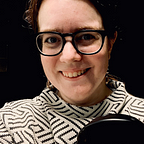Post-Its for Insights
Insights are that Aha! moment we get when muddled ideas come together to finally form something that translates into value.
Prior to taking IDEOu’s course on Insights for Innovation, I had always taken for granted that the creative process was mostly a lucky occurrence. IDEO calls it the “Creative Confidence” — believing that you have the power to create and innovate on your terms.
Here, I will take you through the steps that led me to the current design of our organizational culture for Engagement, using Design Thinking. We’ll also share resources for better brainstorming and insights at the end of this article.
Defining the Problem
While the conclusion may seem obvious, it was not so obvious when first approaching the issue. Finding the right angle to the problem was half the battle. It helped me define the extremes I wanted to interview, giving me a wide range of ages and professions, a good reflection of the community we were building.
Gathering the Data
After observing and interviewing various community leaders both in the corporate and in the non-for-profit space, I carefully replayed every interview and image, jotting down one idea per post-it.
Using the empathy map, I used the interviews to gain different perspectives. I used colour-coding to represent different ways of interacting with the world (from seeing to thinking or feeling), making abstraction of the person who originally shared it.
Looking for Patterns
The second step for me was to structure the information, also known as clustering. By gathering the related ideas together, I started seeing patterns emerge. I also used common tools such as customer journeys and blue prints to look at information in time.
I found:
- Common themes and correlations between positions within a theme.
- Similarities and, conjunctly, many divergences.
These two points became the guiding lines for my analysis.
Contradictions within points of view of a same person or theme proved to be the most revealing pieces of information.
Initial Insights
Initial insights started to emerge.
First, that communities were Ecosystems.
I could see that even as I segmented participants in different engagement groups, they were intertwined. As one interviewee stated :
“ There is something known as the Rule of Third. When you see one person dancing in the street, it’s a weirdo. When a second comes and joins him, that’s two weirdos. When a third comes, it’s a trend. There is great power in supporting and encouraging budding ideas even if they are not my own. It’s the adoption of an idea that makes it successful.”
Second, that not everyone had bought into the idea we can have an impact.
Every single person interviewed had values of peace, inclusion, diversity. Yet when you dug deeper, they did not voice the same opinions and feelings on these topics.
By clustering them in the way marketers do, on a spectrum rather than on distinct categories, a continuum of ideas started to show the underlying theme: how much power do we really have?
It was not a values issue, it was a feasibility issue.
Third, it also emerged that to be a good leader, we had to understand people the way we understood chocolate: people were very nuanced and their experiences of the world put them on an ever-evolving continuum, rather than in set buckets for life.
Pairing chocolate to the right wine is similar to the act of leadership: good leaders need to learn to couple the people they are working with, with the right role for them in the organization. And they need to remain attentive to the evolution of the people around them, so they can continuously adjust the pairing of the role and people.
The Final Insight
Having multiple insights is great, but it dilutes the message. It took me time to consolidate all of my insights, but I realized it was possible to bundle all three into one big idea — they were all ramification of a same central insight.
It produced the video you see at the start of this article.
One of the coaches in the course inquired how these insights would translate into our organization. This was a great question: insights are, after all, only valuable if you put them into action.
For Design Thinking Montreal, they contributed to the first step of developing marketing, recruitment, retention and management strategies. You can read more about it here.
Free Resources
Ready for your own brainstorming session? Check out a few of these free resources to help you prepare:
- Have a look at the Empathy section of our Free Downloadable Resources for DT Community Leaders
- Explore or refresh your mind on the basics of observing, interviewing and experiencing with this article on an Ethnography Workshop with expert Gaëlle Calvet.
